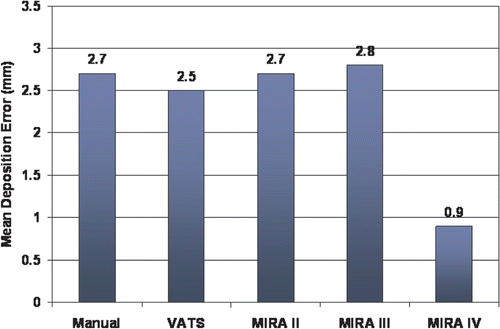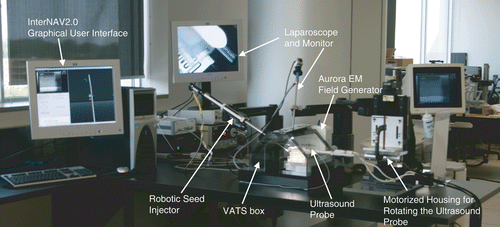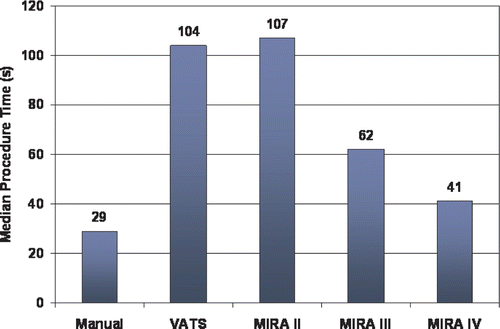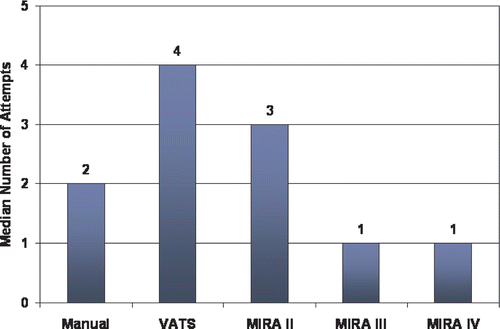Figures & data
Figure 2. Original InterNAV™ graphical user interface (a) and the modified InterNAV2.0™ (b). The main modifications include the following: The camera is oriented in line with the needle axis (for easier usage of the software); the control panel provides direct control of the robot motion and dropping of the seeds (for finer control over robot motions); a depth display (for increased penetration accuracy) has been introduced; and arrow guides are provided (for increased orientation accuracy). [Color version available online.]
![Figure 2. Original InterNAV™ graphical user interface (a) and the modified InterNAV2.0™ (b). The main modifications include the following: The camera is oriented in line with the needle axis (for easier usage of the software); the control panel provides direct control of the robot motion and dropping of the seeds (for finer control over robot motions); a depth display (for increased penetration accuracy) has been introduced; and arrow guides are provided (for increased orientation accuracy). [Color version available online.]](/cms/asset/fad844bc-125c-4366-9745-84f75008dda3/icsu_a_297138_f0002_b.gif)
Figure 3. Flow chart of component interaction in the MIRA IV with InterNAV2.0™ system. [Color version available online.]
![Figure 3. Flow chart of component interaction in the MIRA IV with InterNAV2.0™ system. [Color version available online.]](/cms/asset/2f7502b0-1fd1-4f27-9a1d-9604e6d72c84/icsu_a_297138_f0003_b.gif)
Figure 4. The opaque agar cube (4.5 × 4.5 × 4.5 cm) used to simulate lung tissues beside the brachytherapy seed cylinder (0.8 × 5 mm) and the stainless steel bead (1.6 mm in diameter) used as a target.
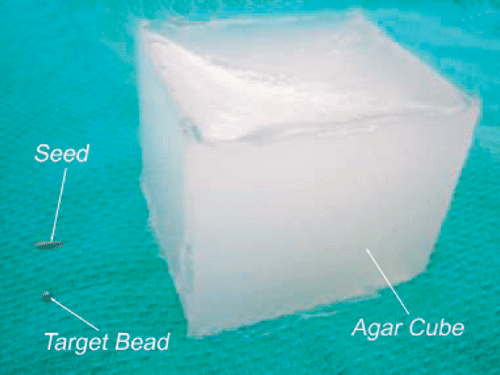
Table I. The five experimental setups.
Table II. Summary of experimental results.
Figure 5. The accuracy of each method is displayed as the mean error. The MIRA IV system significantly improved the target accuracy by 64% (2.5 mm to 0.9 mm) compared to a standard VATS and by 68% (2.8 mm to 0.9 mm) compared to the MIRA III system without navigational guidance.
